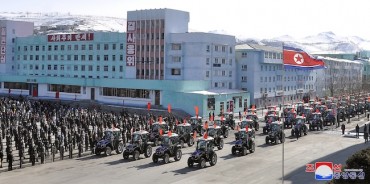
More than half of South Korea’s wild Asiatic black bears, also known as moon bears, are currently unaccounted for, according to data released by the Ministry of Environment. (Image courtesy of the Ministry of Environment)
SEOUL, Oct. 18 (Korea Bizwire) – More than half of South Korea’s wild Asiatic black bears, also known as moon bears, are currently unaccounted for, according to data released by the Ministry of Environment.
The report, obtained by Democratic Party lawmaker Lee Yong-woo of the National Assembly’s Environment and Labor Committee, reveals that out of 89 known bears living in areas such as Jirisan National Park, only 32 have functioning tracking devices.
Of the remaining bears, 19 have malfunctioning or damaged trackers, while 38 — born in the wild to reintroduced bears — have never been fitted with tracking devices.
The tracking system faces significant challenges. The devices have a battery life of only two years and are prone to damage or removal by the bears themselves. Replacing them requires capturing the animals, a difficult and potentially dangerous task.
As the number of wild-born bears increases, authorities are finding it increasingly difficult to monitor the population. This lack of oversight has coincided with a rise in bear-related incidents and fatalities.
Since 2005, 11 bears have died due to accidents, including entrapment in snares. In the same period, there have been 588 insurance claims related to damage caused by the bears, with compensation reaching over 1 billion won for 572 cases, excluding this year’s figures.
The challenges in maintaining the tracking system have led to calls for a shift in management strategy. Experts suggest focusing on habitat density and management rather than individual tracking.
This year marks the 20th anniversary of South Korea’s moon bear restoration project, which began in 2004 with the release of six bears from Russia into Jirisan National Park. The project aimed to establish a minimum viable population of 50 bears, a goal it has surpassed.
However, with the current population potentially exceeding the estimated optimal range of 56-78 bears in Jirisan, some experts now worry about overpopulation.
“We need a paradigm shift to recognize that nature is shared between humans and animals,” said Lee. He emphasized the need for better public education on wildlife interaction and the importance of preventive measures to mitigate human-wildlife conflicts.
Lina Jang (linajang@koreabizwire.com)






